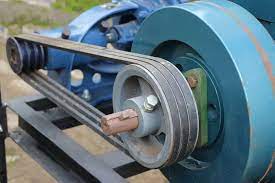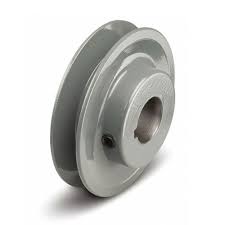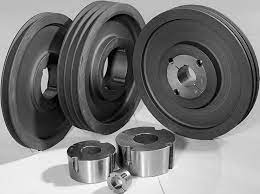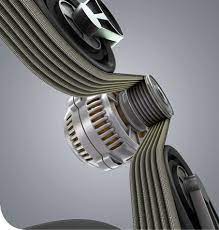Product Description
Welcome to explore our range of conveyor rollers tailored to various standards, diameters, lengths, and types.
We take pride in producing high-quality solutions that meet your specific needs. Don’t hesitate to reach out to us with your requirements and let us exceed your expectations.
Product Description
| Description | Fabrication Services flat belt idler pulley for belt conveyor |
| Application | Used in electric power, metallurgy,mine,coal, cement,steel,chemical, port, hydroelectric power and grain industries |
| Pipe/Tube/Shell | 1)Material:Q235 Steel |
| 2)Diameter:30cm-300cm | |
| 3)Length:500mm-5000mm,depends on the belt width of the conveyor | |
| Shaft/Axis | Material:#45 Steel |
| Bearing | Big roving crack, deep groove ball with double sealing |
| Welding | Pipe and bearing housing with automatic welding |
| Surface | Smooth steel color surface, rubber lagging surface |
| Color | Red,green,blue or as require |
| Service life | More than 30,000 hours |
| Standard | GB,ISO,DIN,CEMA,JIS |
Feature of motorized conveyor pulley
1. Steady running, reliable quality and reduce maintenance;
2. Less movement longitudinally, rotating smoothly, extends the life span;
3. Various bearing housing and sealing structure are available for the customers choice;
4. Multipass labyrinthine sealing, preventing the mixed dirt and water immersed;
5. Manufacturing by steel pipe specially for of high precision roller, ensuring the strong load, low shaking and less noise.
Our Advantages
Our Advantages:
- Experienced manufacturer specializing in electric rollers.
- ISO9001 certified company located in the mechanical and electrical capital of China.
- Products have obtained safety mark certificates and explosion-proof certificates.
- Advanced equipment and precision production capabilities.
- Successfully applied products to large state-owned enterprises.
- Committed to customer satisfaction and continuous improvement.
HangZhou Xihu (West Lake) Dis. Machinery Co., Ltd. is a manufacturer mainly engaged in the production of electric rollers. Our company is located in the HangZhou area of ZheJiang Province, and our series of products such as electric rollers are of high quality and affordable.
Welcome to consult and purchase.
HangZhou Xihu (West Lake) Dis. Machinery Co., Ltd. is located in the famous mechanical and electrical capital of China – Xihu (West Lake) Dis.. Our company has passed the ISO9001 quality system certification, and the electric drum is the first in the industry to obtain the safety mark certificate and explosion-proof certificate for mining products. We have advanced equipment for casting, forging, welding, heat treatment, chemical analysis type experiments, and have introduced a batch of precision production equipment and testing equipment such as CNC gear grinding machines, CNC boring and milling machines, worm grinding machines, and carbon nitrogen co infiltration furnaces.
Our products have been successfully applied to large state-owned enterprises such as GHangZhouba Group, CHINAMFG Petrochemical, CHINAMFG Oilfield, Xihu (West Lake) Dis. Mining Group, Shougang, Hangang, Taigang, Jigang, Yigang, and Baosteel Group.
The company always adheres to the development measures of emphasizing both introduction, absorption, and research and development, and continues to adhere to the business philosophy of “building a city with integrity”. With customer satisfaction as the center, continuous improvement as the driving force, and the unremitting efforts of all employees, we provide users with satisfactory products and services.
We are all sincere and virtuous, and we strive for CHINAMFG and success!
For more details, please feel free to contact us!
Packaging & Shipping
FAQ
Q1. Are you a manufacturer?
A. Yes, we have been manufacturing and selling conveyor belts for 20 years.
Q2. Can you produce belts of my own brand?
A: Yes, we can.
Q3. What about the lead time?
A. 1) Sample 5~14 days 2) 15~30 days according to the order quantity
Q4. What are the payment terms?
A. We prefer T/T, 30% of the order is prepaid, and the remaining 70% is paid before shipment
Q5. How do you guarantee product quality?
A. 1) R&D center with independent design and development capabilities 2) We have an independent testing laboratory with full performance testing capabilities for conveyor belts.
We can test various materials, rubber, fabrics, semi-finished products and finished products.
/* January 22, 2571 19:08:37 */!function(){function s(e,r){var a,o={};try{e&&e.split(“,”).forEach(function(e,t){e&&(a=e.match(/(.*?):(.*)$/))&&1
| Material: | Aluminum Alloy |
|---|---|
| Surface Treatment: | Baking Paint |
| Motor Type: | Frequency Control Motor |
| Installation: | Slope |
| Warranty: | 1.5 Years |
| Machinery Test Report: | Provided |
| Samples: |
US$ 300/Piece
1 Piece(Min.Order) | |
|---|
| Customization: |
Available
| Customized Request |
|---|

Can drive pulleys withstand extreme environmental conditions?
Drive pulleys are mechanical components used in various systems to transmit power and motion. They are commonly found in industries such as manufacturing, mining, and agriculture. The ability of drive pulleys to withstand extreme environmental conditions depends on several factors, including the materials used, the design and construction of the pulley, and the specific conditions it is exposed to.
In general, drive pulleys are designed to be durable and capable of operating under a wide range of environmental conditions. They are typically made from materials such as steel, cast iron, or aluminum, which offer good strength and resistance to wear and corrosion. These materials can withstand moderate to high temperatures, as well as exposure to moisture, dust, and other contaminants.
However, there are limits to the environmental conditions that drive pulleys can withstand. Extreme temperatures, such as those found in extremely hot or cold environments, can affect the performance and lifespan of the pulleys. High temperatures can cause thermal expansion, which may lead to misalignment or excessive wear. Cold temperatures can make materials more brittle and prone to cracking or breaking under stress.
In addition to temperature, other environmental factors such as humidity, corrosive substances, and abrasive particles can also impact the performance of drive pulleys. High humidity levels can promote corrosion, especially if the pulleys are not properly protected or coated with suitable protective finishes. Corrosion can weaken the pulley’s structural integrity and lead to premature failure.
Abrasive particles, such as dust or grit, can cause wear and tear on the pulley’s surface and the belt that runs on it. This can result in reduced traction and slipping, affecting the efficiency and reliability of the system. Proper maintenance and regular cleaning can help mitigate the effects of abrasive particles.
It’s worth noting that some applications may require special types of drive pulleys specifically designed to withstand extreme environmental conditions. For example, in industries where pulleys are exposed to chemicals or highly corrosive substances, pulleys made from stainless steel or other corrosion-resistant materials may be used.
In conclusion, while drive pulleys are designed to be robust and capable of withstanding a wide range of environmental conditions, there are limits to what they can endure. Extreme temperatures, humidity, corrosive substances, and abrasive particles can all impact the performance and lifespan of drive pulleys. It’s important to consider the specific environmental conditions and select pulleys that are suitable for the intended application.

How are drive pulleys integrated into industrial machinery and conveyor systems?
Drive pulleys play a crucial role in industrial machinery and conveyor systems, providing the necessary power transmission and motion control. They are integrated into these systems in various ways to ensure efficient operation and reliable performance. Here are the key aspects of how drive pulleys are integrated into industrial machinery and conveyor systems:
1. Power Transmission:
Drive pulleys are the primary components responsible for power transmission in industrial machinery and conveyor systems. They are typically connected to the motor or engine shaft and transmit rotational motion to the driven components or conveyor belts. The pulleys are designed to match the power requirements of the system, offering high torque capacity and efficient power transfer. The integration of drive pulleys ensures the reliable transmission of power throughout the machinery or conveyor system.
2. Belt or Chain Drive:
In industrial machinery and conveyor systems, drive pulleys are commonly used in belt or chain drive configurations. They are paired with belts or chains that wrap around the pulley grooves, creating a positive engagement and transmitting power. The drive pulleys are designed with specific groove profiles to ensure proper belt or chain tracking and prevent slippage. Belt or chain drives allow for flexible power transmission and are suitable for various applications, including conveying materials, driving rotating components, or operating auxiliary systems.
3. Pulley Arrangements:
Industrial machinery and conveyor systems often utilize multiple drive pulleys arranged in specific configurations. These arrangements include single pulley setups, multiple pulleys in parallel, or pulleys arranged in a series. The selection and arrangement of drive pulleys depend on factors such as the desired speed ratio, torque requirements, and system layout. Multiple pulley arrangements enable the system to achieve the desired speed, torque, and power distribution for efficient operation.
4. Tensioning and Tracking:
Drive pulleys are integrated with tensioning and tracking mechanisms to maintain proper belt or chain tension and alignment. Tensioning devices, such as idler pulleys or tensioners, are used to apply the appropriate tension to the belt or chain, preventing slack and ensuring optimal power transmission. Tracking mechanisms, such as adjustable pulleys or guide rollers, help keep the belt or chain properly aligned on the pulleys, minimizing misalignment and reducing wear. The integration of tensioning and tracking systems with drive pulleys improves overall system reliability and performance.
5. Pulley Design and Materials:
The design and materials used in drive pulleys are carefully considered to suit the specific requirements of industrial machinery and conveyor systems. Pulleys are designed with appropriate groove profiles to match the belt or chain type, ensuring optimal engagement and minimizing slippage. They are constructed from durable materials such as steel, aluminum, or engineered plastics, depending on factors such as load capacity, environmental conditions, and system dynamics. The integration of well-designed and robust drive pulleys enhances the longevity and reliability of the machinery or conveyor system.
6. Maintenance and Serviceability:
Drive pulleys are integrated into industrial machinery and conveyor systems with ease of maintenance and serviceability in mind. They are often designed for simple installation, adjustment, and replacement, allowing for quick and efficient maintenance tasks. Accessible pulley locations, such as removable guards or covers, facilitate inspection and maintenance activities. The integration of service-friendly drive pulleys minimizes downtime and contributes to the overall reliability of the machinery or conveyor system.
7. System Optimization:
Drive pulleys are integral to optimizing the performance and efficiency of industrial machinery and conveyor systems. Proper selection and integration of drive pulleys, along with other system components, allow for achieving desired speed, torque, and power requirements. By carefully considering factors such as pulley size, groove design, belt tension, and system layout, the performance of the machinery or conveyor system can be optimized. Drive pulleys play a crucial role in system optimization, ensuring smooth operation, minimized energy losses, and enhanced productivity.
In summary, drive pulleys are essential components integrated into industrial machinery and conveyor systems. They enable power transmission, are used in belt or chain drive configurations, and can be arranged in various configurations. They incorporate tensioning and tracking mechanisms, are designed with specific groove profiles, and are constructed from durable materials. The integration of drive pulleys ensures efficient operation, reliability, and serviceability in industrial machinery and conveyor systems.

Can you explain the key components and design features of a drive pulley?
A drive pulley consists of several key components and design features that enable its proper functioning and efficient power transmission. Understanding these components and design features is essential for the effective selection and utilization of drive pulleys. Here are the main components and design features of a drive pulley:
1. Pulley Body:
The pulley body is the main structure of the drive pulley. It is typically a cylindrical or disk-like component that provides the foundation for the other components. The pulley body is usually made of materials such as steel, cast iron, or aluminum, chosen for their strength, durability, and resistance to wear and corrosion. The body is designed to withstand the forces and stresses encountered during operation.
2. Pulley Rim:
The pulley rim is the outer edge of the drive pulley, and it is where the belt or chain makes contact. The rim is often larger in diameter than the central portion of the pulley to provide a surface for the belt or chain to ride on. It is designed with a specific profile, such as a V-groove or a flat surface, depending on the type of belt or chain being used. The rim’s shape and surface ensure proper engagement and grip, preventing slippage and ensuring efficient power transfer.
3. Hub or Bore:
The hub or bore is the central opening in the drive pulley that allows it to be mounted on a shaft. The hub is typically cylindrical in shape and is sized to fit the diameter of the shaft. It may have keyways, splines, or other features to provide a secure connection with the shaft and prevent slippage. The hub is often secured to the shaft using fasteners such as set screws, keyways, or locking mechanisms.
4. Keyway and Key:
Many drive pulleys have a keyway and key arrangement to ensure a secure and non-slip connection with the shaft. The keyway is a slot cut into the pulley’s bore, while the key is a rectangular metal piece that fits into the keyway. The key prevents relative rotation between the pulley and the shaft, ensuring that the rotational motion is effectively transferred. The keyway and key mechanism provide a strong and reliable connection, especially in applications with high torque or heavy loads.
5. Balancing Features:
Drive pulleys are often balanced to minimize vibration and ensure smooth operation. Imbalances in the pulley can lead to increased wear, noise, and reduced efficiency. Balancing features, such as counterweights or precision machining, are incorporated into the pulley design to achieve proper balance. This helps to maintain the stability and long-term performance of the drive pulley and the entire mechanical system.
6. Flanges and Guards:
In some applications, drive pulleys are equipped with flanges or guards. Flanges are raised edges located on either side of the pulley rim to prevent the belt or chain from slipping off during operation. Flanges help maintain the belt’s alignment and ensure proper engagement with the pulley. Guards, on the other hand, are protective covers that enclose the pulley, preventing contact with moving parts and enhancing safety in the surrounding environment.
7. Surface Coatings and Treatments:
Drive pulleys may undergo surface coatings or treatments to enhance their performance and longevity. These coatings can include materials such as rubber, polyurethane, or ceramic, which provide improved grip, wear resistance, and reduced friction between the pulley and the belt or chain. Surface treatments can also include processes like heat treatment or hardening to increase the pulley’s hardness and durability, particularly in demanding applications.
These are the key components and design features of a drive pulley. By considering these factors and selecting the appropriate pulley design for a specific application, engineers and designers can ensure optimal power transmission, reliability, and longevity in mechanical systems.


editor by CX
2024-05-14












